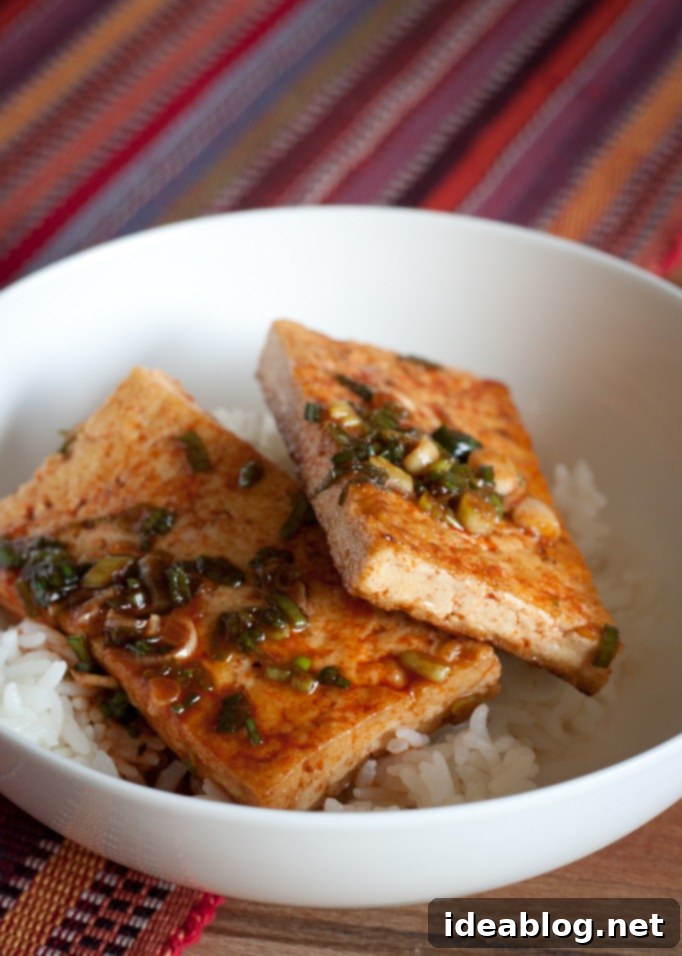Authentic Korean Braised Tofu (Dubu Jorim) Recipe: A Flavorful Journey from Restaurant to Home
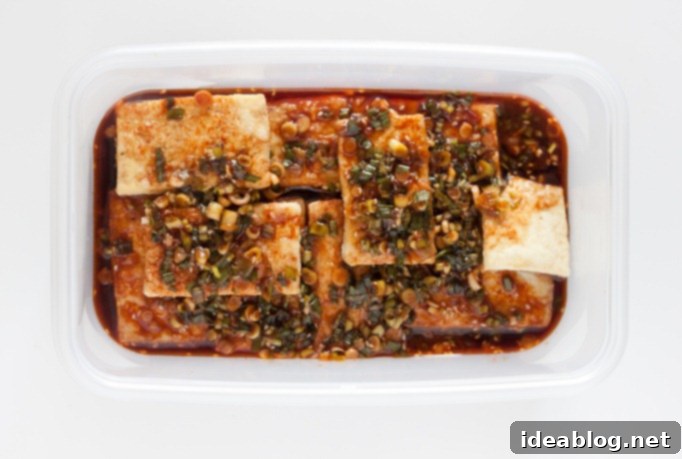
Have you ever experienced that magical moment when you taste a dish at a restaurant, and a profound desire sparks within you: “I absolutely *must* recreate this at home”? We’ve all been there, captivated by an irresistible flavor. For me, that feeling found its ultimate expression with this particular traditional Korean dish, known as Dubu Jorim. It’s a culinary quest that led me down a delightful path of discovery, experimentation, and finally, triumph in my own kitchen.
Dubu Jorim, a classic Korean braised tofu, is far more than just a side dish (banchan) in Korean cuisine; it’s a staple beloved for its comforting yet complex flavors. Tofu, a versatile and healthy protein source, is transformed through a savory, spicy, and slightly sweet marinade, resulting in a dish that’s incredibly satisfying whether served warm or chilled. This recipe isn’t just about cooking; it’s about bringing a piece of Korean culinary tradition into your home, mastering a technique, and savoring the rewarding flavors of persistence.
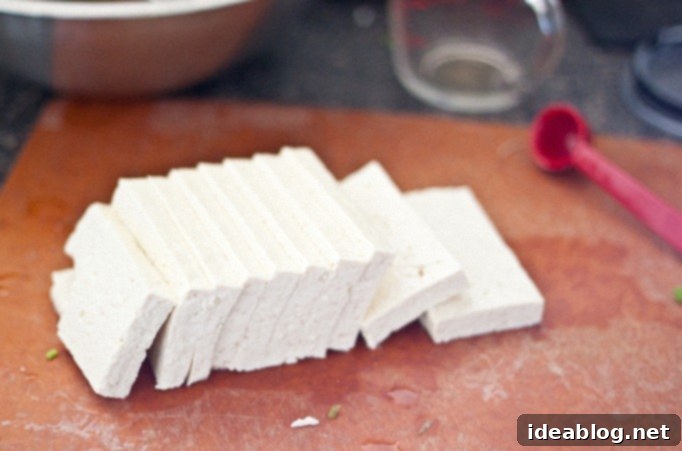
My Journey to Recreating the Perfect Dubu Jorim at Home
My first encounter with Dubu Jorim wasn’t in a high-end Korean restaurant, but rather, at my cherished local sushi spot. It was offered as a complimentary banchan, and from the first bite, I was utterly smitten. The soft, yet slightly chewy tofu, drenched in a vibrant, spicy, and savory sauce, left an indelible mark on my palate. It wasn’t long before I discovered it again, conveniently pre-packaged in the prepared foods section of my favorite Asian supermarket, H-Mart. This solidified my love for the dish and ignited a persistent craving that could only be satisfied by making it myself.
The initial attempts to unlock the secrets of Dubu Jorim were, admittedly, a bit ambitious and, frankly, unsuccessful. My hopeful endeavor to directly extract the recipe from the source—a friendly waitress—proved futile. Despite my enthusiastic adoration for the dish, she wasn’t quite ready to reveal the culinary magic that went into making it. This meant I had to embark on my own self-guided journey of culinary detective work.
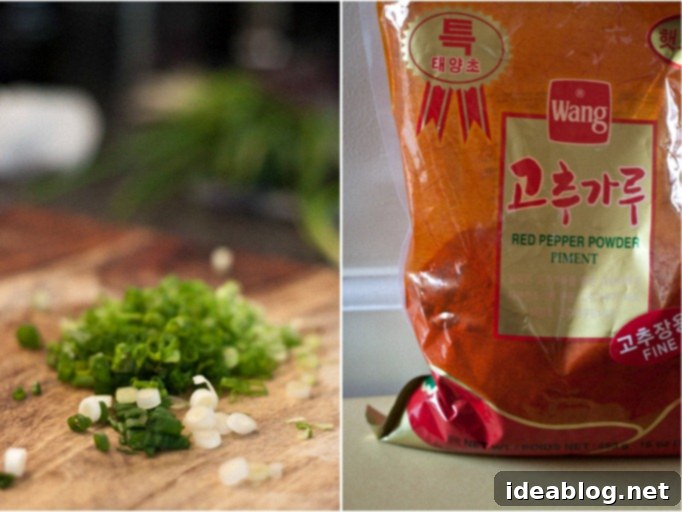
Years passed, filled with numerous at-home experiments, some producing edible results, others leading to mild disappointment. There were moments when I nearly gave up hope, convinced that the restaurant’s secret would remain just that – a secret. However, perseverance in the kitchen often pays off, and I’m thrilled to share that I believe I’ve finally cracked the code to creating a truly authentic and delicious Dubu Jorim right in your own kitchen!
My breakthrough actually came from a rather unassuming source: the ingredient label on the prepared food container from H-Mart. That provided the foundational list. The real challenge, and the true art, lay in deciphering the exact quantities and the delicate balance required for each ingredient to achieve that perfect, coveted flavor profile. It was a process of trial and error, adjusting a pinch here and a dash there, until the flavors harmonized beautifully.
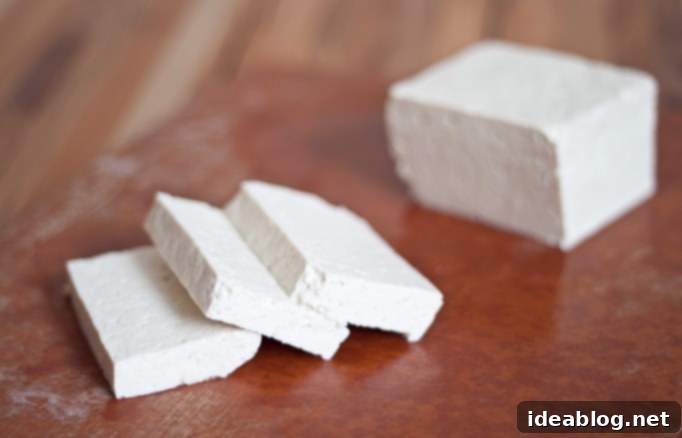
The Heart of Korean Flavor: Gochugaru (Korean Red Pepper Powder)
The undisputed star and flavor cornerstone of this dish, and indeed many Korean recipes, is Korean red pepper powder, known as Gochugaru (고춧가루). This isn’t just any chili powder; it’s a finely ground, vibrant red powder that offers a unique blend of heat and fruity sweetness, providing the main flavor profile behind Dubu Jorim. Its texture is crucial: for this recipe, you’ll want the fine ground variety, which dissolves smoothly into the marinade, ensuring even distribution of flavor without a gritty texture.
You can find high-quality fine ground Korean red pepper powder in nearly every Asian supermarket, especially those specializing in Korean ingredients. Brands like Sempio, Chung Jung One, or Mother-in-Law’s Kimchi offer excellent options. Gochugaru is widely used to make kimchi, which means it tends to come in larger quantities, often in one-pound bags or more. While this might seem like a lot, it’s incredibly affordable and has a long shelf life when stored properly (ideally in the freezer to maintain its color and potency). Having it on hand opens up a world of delicious Korean cooking possibilities, from spicy stews like Sundubu Jjigae to various marinades and side dishes.

Crafting Your Own Dubu Jorim: Tips for Success
This recipe is remarkably straightforward, emphasizing simple steps that yield complex flavors. The process involves two main stages: preparing the tofu and creating the flavorful marinade, followed by a crucial marination period. Let’s delve into some key aspects to ensure your homemade Dubu Jorim is nothing short of spectacular.
Tofu Selection and Preparation
- **Choose the Right Tofu:** For Dubu Jorim, firm or extra-firm tofu is ideal. Its dense texture holds up well to slicing, searing, and marinating without crumbling. Avoid silken or soft tofu, as it won’t give you the desired texture.
- **No Heavy Pressing Needed:** Unlike some tofu recipes that require extensive pressing, for Dubu Jorim, a simple draining and patting dry is sufficient. Lay the sliced tofu rectangles on a thick layer of paper towels or a clean kitchen towel to absorb excess surface water. This step is important for achieving a good sear.
- **The Art of Searing:** Searing the tofu pieces before marinating serves a dual purpose. Firstly, it creates a slightly crispy, golden-brown crust, adding a delightful textural contrast. Secondly, it helps the tofu maintain its shape and firmness throughout the marinating and braising process, preventing it from becoming soggy. Ensure your skillet is hot and has a thin layer of oil to achieve that perfect sizzle and beautiful golden color. Don’t overcrowd the pan; sear in batches if necessary.
The Flavorful Marinade
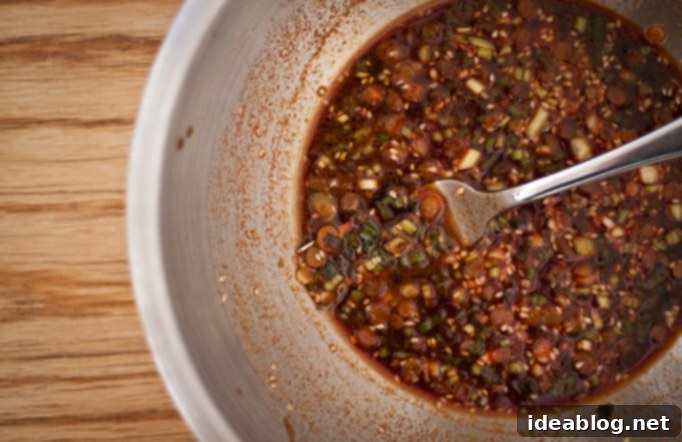
The marinade is where all the magic happens. It’s a harmonious blend of savory, spicy, sweet, and fresh elements:
- **Soy Sauce & Water:** Form the liquid base, providing saltiness and allowing the tofu to absorb flavors deeply.
- **Korean Fine Red Pepper Powder (Gochugaru):** The star for heat and authentic Korean flavor. Adjust the amount to your spice preference.
- **Dark Brown Sugar:** Balances the spice and salt, adding a subtle sweetness and depth.
- **Canola/Vegetable Oil & Toasted Sesame Oil:** Provide richness. The toasted sesame oil adds a distinct nutty aroma essential to Korean dishes.
- **Finely Sliced Scallions:** Infuse the marinade with fresh, pungent onion flavor. Don’t skimp on these!
- **Lime Juice:** A hint of citrus adds brightness and cuts through the richness, elevating the overall flavor profile.
- **Toasted Sesame Seeds:** Offer a delicate crunch and a beautiful visual appeal, enhancing the nutty notes.
Combine all these ingredients and let them sit for a few minutes to allow the flavors to meld. This short resting time is key before pouring it over your perfectly seared tofu.
The Crucial Marination Period
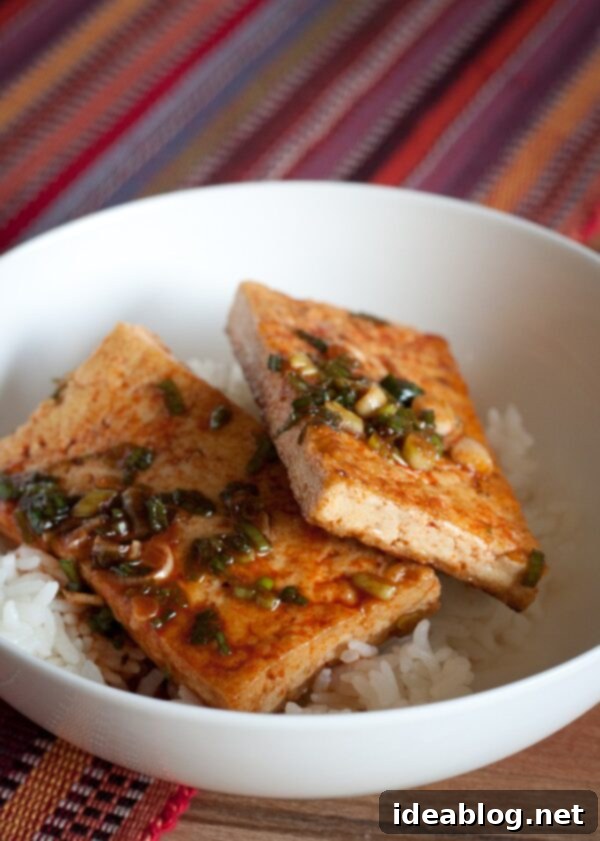
Once the seared tofu is bathed in the marinade, patience becomes your greatest ally. Allow the tofu to chill in the refrigerator for several hours – ideally 6 to 8 hours, or even better, overnight. This extended marination time is vital; it permits the tofu to fully absorb the complex flavors, transforming from a bland block into a succulent, flavor-packed experience. Remember to gently turn the tofu once or twice during this period to ensure every piece is equally saturated with the delicious marinade.
The final product is a symphony of tastes: mildly spicy from the Gochugaru, deeply satisfyingly salty from the soy sauce, and bursting with fresh flavors from the generous amount of chopped scallions, brightened by a hint of lime, and finished with the subtle nuttiness of toasted sesame seeds. It’s a dish that embodies comfort, flavor, and the joy of homemade goodness.
I am incredibly happy to share this recipe with you all. It represents a journey of culinary discovery and the ultimate reward of bringing a beloved restaurant dish to life in my own kitchen. I hope it brings as much joy and deliciousness to your table as it does to mine!
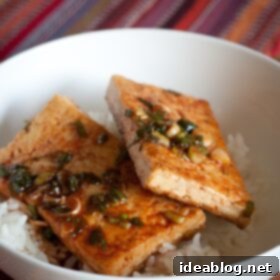
Korean Braised Tofu (Dubu Jorim)
Pin
Review
SaveSaved!
Ingredients
Marinade (yields roughly 2 cups)
- ½ cup (120 mL) soy sauce
- ¾ cup (180 mL) water
- 1 tablespoon Korean fine red pepper powder (Gochugaru)
- 1 tablespoon dark brown sugar
- 1 tablespoon canola or vegetable oil
- 1 teaspoon toasted sesame oil
- 1 cup finely sliced scallions
- ½ teaspoon lime juice
- 2 tablespoons toasted sesame seeds
Tofu:
- 2 (16 oz packages) firm tofu drained and sliced into ½-inch thick rectangles
- canola or vegetable oil
Instructions
-
Combine all the marinade ingredients in a small bowl. Whisk well to ensure the sugar and red pepper powder dissolve evenly. Allow the mixture to sit for 10 to 15 minutes while you prepare the tofu; this brief rest helps the flavors meld.
-
Carefully drain and remove the tofu from its packaging. Slice each block of tofu into uniform rectangles, approximately ½-inch in thickness. Lay the sliced tofu pieces on a thick layer of paper towels or a clean kitchen towel on your counter to absorb any excess water. There’s no need for heavy pressing for this recipe, just removing surface moisture is sufficient for searing.
-
Heat a large non-stick skillet over medium heat. Add a thin layer of canola or vegetable oil, just enough to coat the bottom. Once the oil is hot and shimmering, carefully add the tofu slices, making sure to spread them out in the pan so they are not touching each other. The tofu should sizzle upon contact. Depending on the size of your skillet, you will likely need to cook the tofu in several batches to avoid overcrowding.
-
Sear the tofu on each side for approximately 3 to 4 minutes, or until both sides are beautifully golden brown and lightly crispy. Remove the seared tofu pieces from the pan and place them on a paper-towel-lined plate to absorb any residual oil. Repeat this process until all tofu pieces are seared. Allow them to cool down to room temperature before proceeding to the next step.
-
Arrange the cooled, seared tofu pieces in a baking dish or any other container with a large surface area and relatively high sides. You can layer the tofu if necessary, ensuring to pour marinade over each layer for even distribution. Pour the prepared marinade generously over all the tofu pieces. Cover the dish tightly and refrigerate for roughly 6 to 8 hours, or preferably overnight, to allow the flavors to fully develop and penetrate the tofu. During this time, gently turn the tofu pieces once or twice to ensure proper marination on all sides. This dish is best served chilled, either as a stand-alone snack, a delicious banchan, or alongside steamed short-grain sushi rice.
